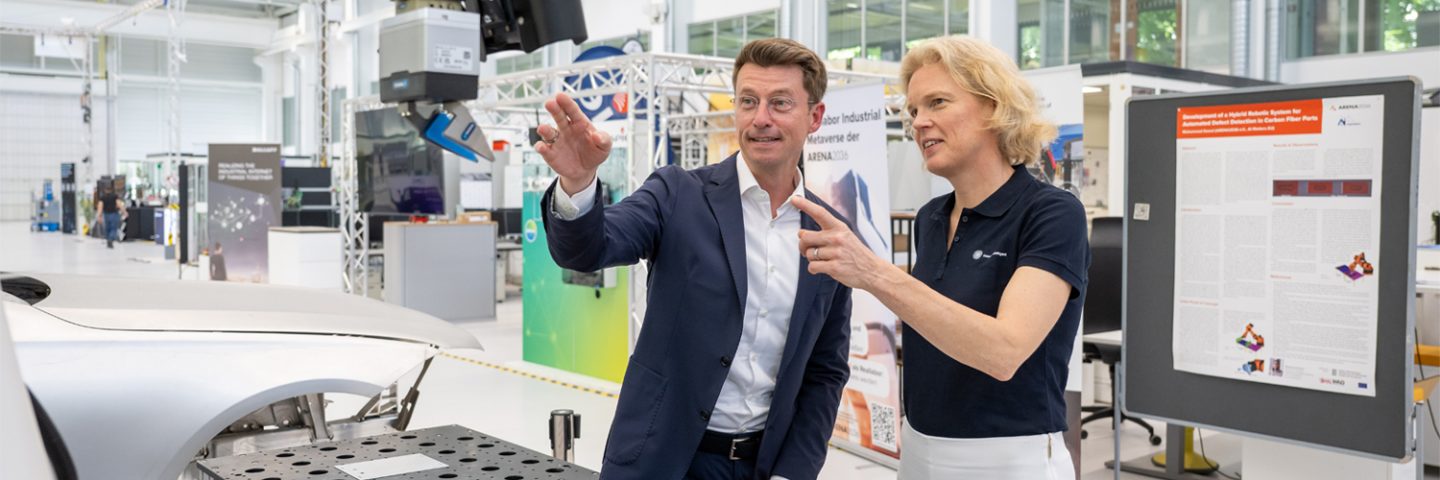
Prof. Hölzle, when we talk about robotics or robots, what exactly are we talking about?
Katharina Hölzle: By definition, a robot is a programmable device consisting of electronic, electrical and mechanical components. Robotics encompasses not only the design and programming of robots, but also their use in the overall system – including the necessary environmental instruments and infrastructure. It becomes particularly exciting when we look at the collaboration between humans and robots: cobots, humanoid robots and other collaborative systems are becoming increasingly important today and will continue to do so in the future.
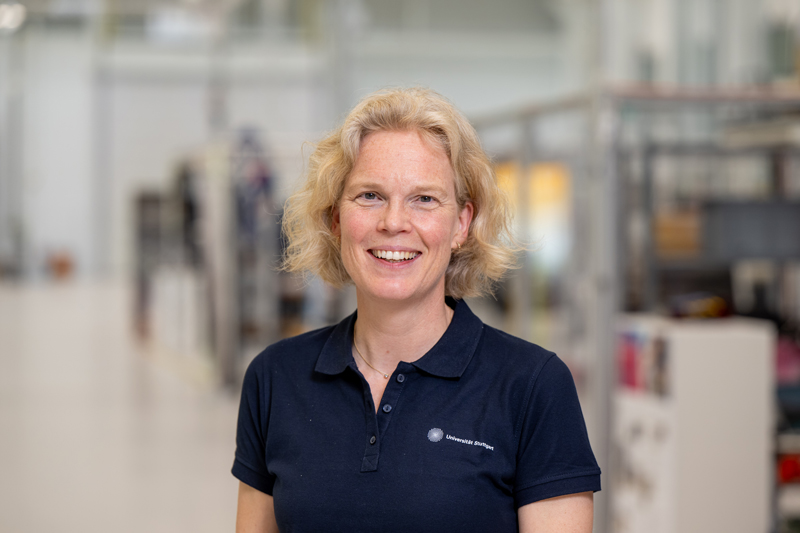
Has the definition changed over the decades?
Katharina Hölzle: The basic definition has remained unchanged over the last 50 years, as the essential components of a robot are stable. What has changed significantly, however, is the way humans and robots interact. After a prolonged period of stagnation, we are currently experiencing a dynamic upswing in collaborative robotics thanks to major advances in artificial intelligence and modern sensor technology.
Robotics is considered a key technology for Industry 4.0. How would you assess the current maturity of robotic systems?
Katharina Hölzle: As I just said, we are currently experiencing an upswing after a plateau phase. Digitalisation and the use of AI are driving the integration of robotic systems. It is important that we create a common platform on which sensor technology, actuator technology and algorithms can work together in the future. To achieve the next leap in productivity, we need open data spaces and interoperable systems.
Mr Breier, when you hear this, what does robotics mean for LAPP in concrete terms? Where do LAPP products encounter robotics applications today?
Hubertus Breier: Robotics is one of the most demanding fields of application for our connection solutions. Due to the three-dimensional free movement in space, the installed cables are simultaneously subjected to bending and torsional forces, which represent an extreme load. This requires highly developed cable designs, for example in the type of stranding of the individual wires and their shielding. We have developed special cables, connectors and drag chains to meet these challenges. Our entire portfolio and all eight of our product brands are used – from data cables and control cables to marking solutions. Our customers include renowned robot manufacturers such as Stäubli, Comau and Dürr. We are seeing growing demand for miniaturised, flexible connection solutions and retrofit products, particularly for cobots, in order to supply additional sensors or grippers on the robot arm with power and data.
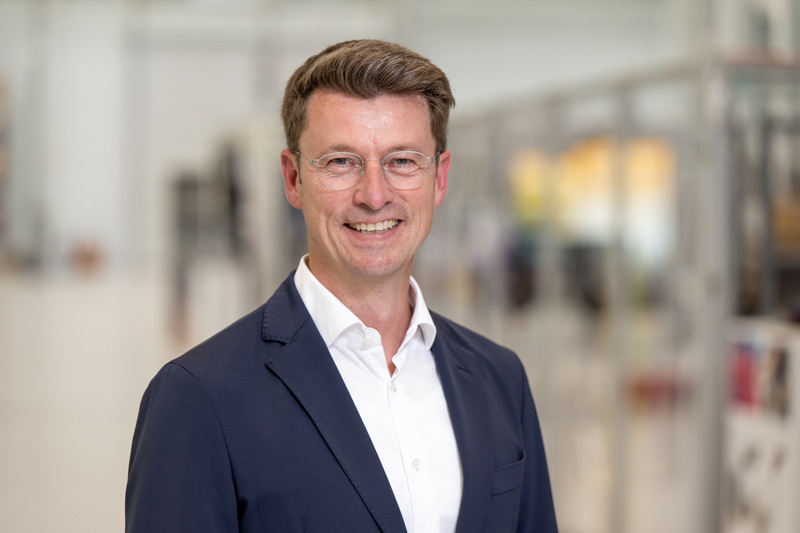
Where does LAPP stand in robotics today, and where does the company want to go?
Hubertus Breier: LAPP responded to the robotics trend back in the early 2000s with the acquisition of Muller et Landais (now LAPP Muller), a company specialising in cables for industrial robots. However, we are currently seeing moderate growth in the field of classic industrial robots, but strong growth in service robots, for example in care and logistics. The Asian market is growing rapidly, which is why we are significantly expanding our production and presence there. We are also investing specifically in the areas of industrial communications and harnessing solutions – for example, pre-assembled dress packs, which are crucial for robotics cabling. A practical example: we are developing cables that can withstand up to two rotations around their own axis per metre and survive ten million cycles. We also work globally with our national companies on various special projects, such as cables for diving robots, which were used in the exploration of the Titanic wreck, for example.
How is the increasing collaboration between humans and robots changing our working world?
Katharina Hölzle: The idea that a robot will simply take over all the work and humans will only have to press a button is wrong. It is more a matter of constant negotiation: where can robots provide useful support, and where do humans remain in the leading position? Exciting areas of application are currently emerging, particularly in the field of service robotics, for example in care or research. The topic of human-robot interaction is also crucial here – how do humans perceive robots, how do they react emotionally to their movements? Standardisation and safety aspects are important here, such as the question of how a robot signals to humans that it has ‘seen’ them. At the same time, we are seeing that people are increasingly forming an emotional bond with AI, which they perceive as a ‘better team member’. We would like to achieve this level of acceptance in robotics as well.
Which industries benefit particularly from service robotics?
Katharina Hölzle: The healthcare and nursing sectors are obvious candidates, despite the high data protection and privacy requirements. However, there is a great deal of openness towards robotics in these areas, as the technology offers relief. Sectors such as industry, research and extreme environments – for example, hot regions for photovoltaic installations or underwater applications – also offer great potential. Service robots can take over tasks that are difficult or dangerous for humans or that have to be carried out in areas that are not easily accessible to humans.
Hubertus Breier: For us at LAPP, this results in a very clear task: to develop connection solutions that function reliably even under extreme conditions – for example, at high temperatures or in extremely harsh environments.
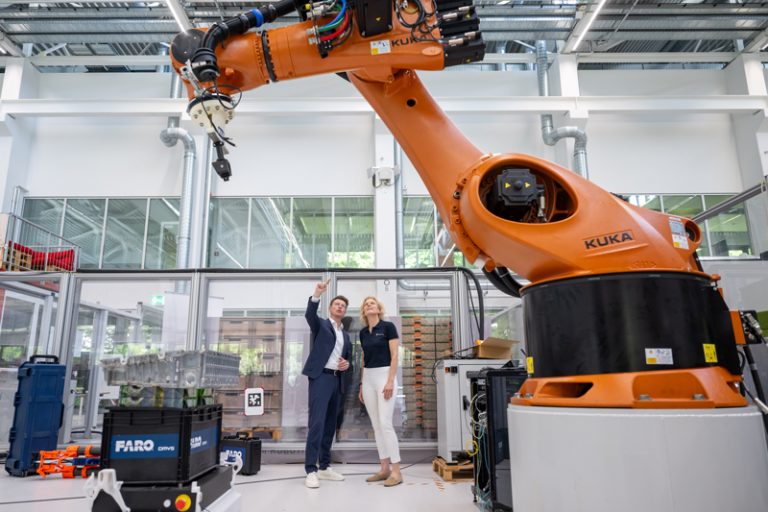
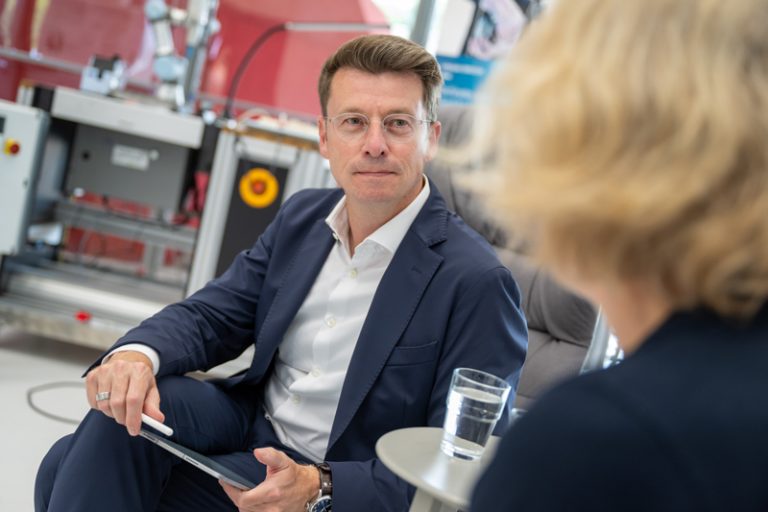
How does LAPP integrate these requirements into its product range?
Hubertus Breier: We rely on lightweight, torsion-resistant and robust cables. It is also important to us that the products are tested as realistically as possible. In addition to the typical and required standardised tests for cables, we carry out our own additional test methods. In the medical sector, hygiene and easy cleaning are important, while in the food industry, suitability for clean environments is key.
Unlike industrial robots, the cables used in many service robots are still less complex today, but they nevertheless have special requirements. It is important for us to focus specifically on the field of robotics and to work closely with research institutions in order to identify the requirements of tomorrow.
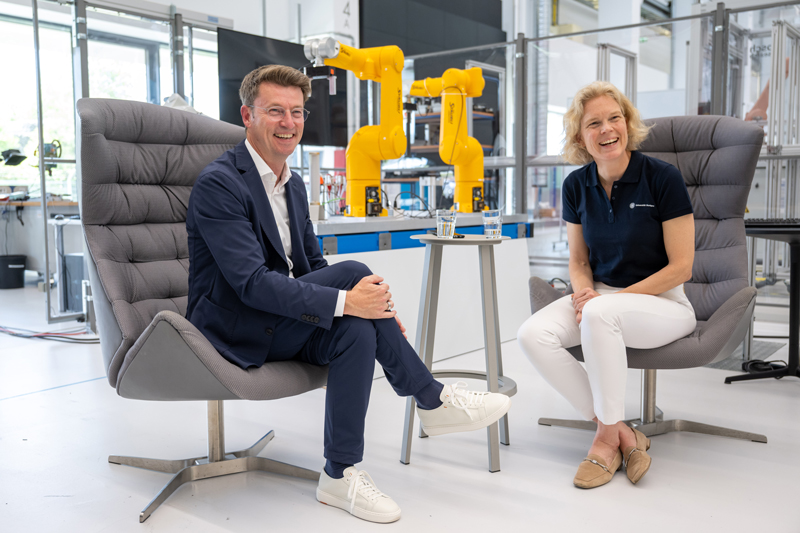
Ms Hölzle, as a representative of industry-oriented research, what are your expectations of industrial companies?
Katharina Hölzle: We value close cooperation with industry, which gives us insights into which issues are currently relevant and where there is a need for research. It is equally important that companies respond to our findings and that we develop solutions together. Only in this way can we ask the right questions and find the right answers.
Mr Breier, what does LAPP need in order to meet these expectations? What areas of action do you see for politics and science?
Hubertus Breier: Access to funded research projects must become easier and less bureaucratic, especially for medium-sized companies like LAPP. Although our scientific technology advisory board actively supports us in identifying eligible projects, the application and reporting processes are often time-consuming. We would like to see less bureaucracy in this area so that we can invest more resources in research and development.
What specific innovations is LAPP pursuing in the field of robotics?
Hubertus Breier: Innovations in the product area include the development of torsion-optimised cables with new shielding technologies. We are also focusing on hybrid cables. Hybrid cables are used, for example, when power and control cables are combined with data cables in a single cable. This results in massive space savings, which is very important for all types of robots. This step is particularly important for cobots, where cables are preferably routed internally. Through exchanges with our customers, such as the manufacturer of an exoskeleton, exoIQ, we gain insights into their applications and challenges and can thus drive innovation quickly and agilely. We are also expanding the independence of our sites in APAC so that we can respond more quickly to market needs there. In addition, we are exploring partnerships in the field of humanoid robotics so that we can be part of this forward-looking development at an early stage.
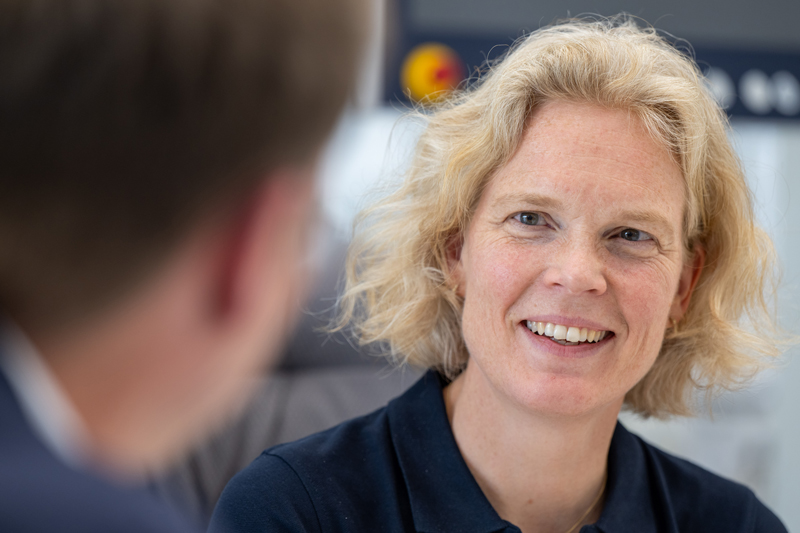
Looking to the future – what will a typical production site look like in ten years, and what role will robotics play?
Katharina Hölzle: Ten years is a really long time in this field, but I’ll be bold and, for the sake of simplicity, just look at Germany: In Germany, we have managed to establish a highly customised and high-quality manufacturing process. At the same time, we are also focusing on mass production in Europe and developing and manufacturing products that can then be quickly customised for different use cases. This requires a production paradigm that we do not currently have. In ten years, we see individualised, high-quality manufacturing in Germany that can be flexibly adapted to different applications – a ‘breathing’ production system controlled by AI and robotics. Mass production will be regionalised and more automated.
Hubertus Breier: Globalisation is on the decline, but specialisation remains important, and local value creation is regaining significance as a result. Service robotics will grow strongly, and driverless transport systems will replace human labour in routine tasks in some areas. Humanoid robots will take over assembly work, relieving humans of physically demanding tasks – exoskeletons are a first step in this direction. In view of demographic change, this development is essential for competitiveness. We must constantly ask ourselves how we can sustainably retain people in value creation, because not everyone can be a data scientist or programmer.
Katharina Hölzle: We will always have value creation in the context of services or, for example, in the construction industry. Here, roles just need to be redefined. What’s more, no one wants a society in which people no longer have a meaningful place. This requires socio-political discussions and a systemic perspective: Who will do what in the future? What skills and responsibilities will be needed?
Thank you very much for the valuable insights and the interview.
